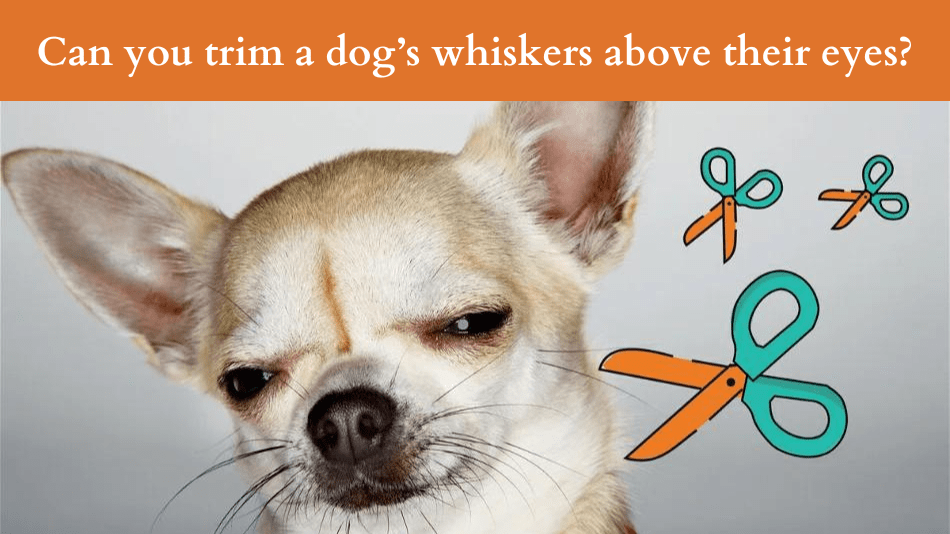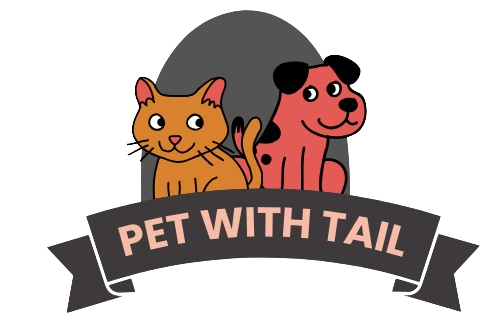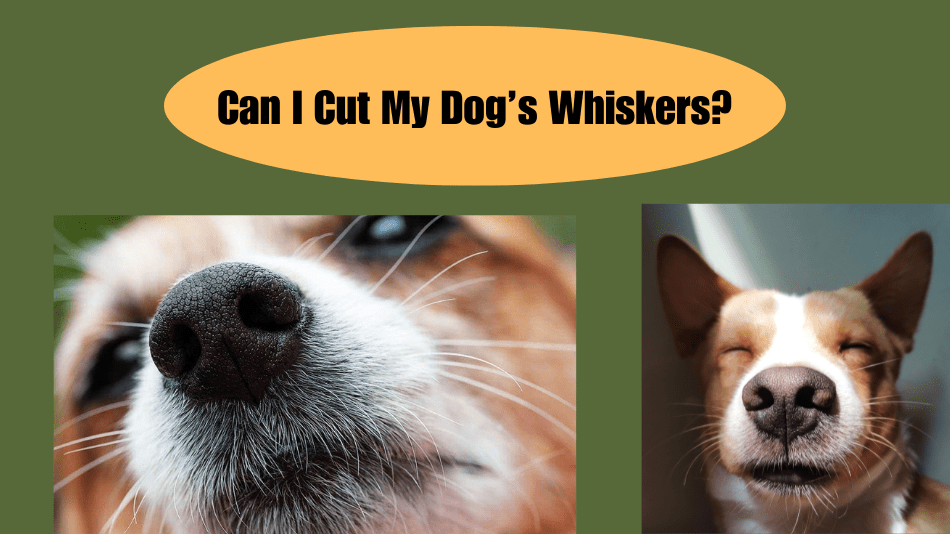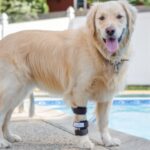If you have ever wondered if can I cut my dog’s whiskers?, you are not alone. Many dog owners are tempted to trim or shave their dog’s whiskers for aesthetic reasons or to prevent them from getting tangled or dirty.
However, before you reach for the scissors, you should know that dog whiskers are not just ordinary hairs. They are sensory organs that help your dog navigate, communicate, and protect himself from potential threats. In this article, we will explain what dog whiskers are, what they do, and why you should not cut them.
Contents
Can I cut my dog’s whiskers? It helps your dog sense their surroundings
Whiskers are attached to nerve endings that send signals to the brain. When the whiskers touch or move, they create vibrations that inform your dog about the size, shape, and distance of objects, as well as air currents and wind direction.
This helps your dog avoid bumping into things, find their way in the dark, and hunt for prey. Cutting your dog’s whiskers can impair their spatial awareness and make them more prone to accidents.
Whiskers help your dog communicate
Whiskers are also part of your dog’s body language. They can indicate your dog’s mood, emotions, and intentions. For example, when your dog is relaxed, their whiskers are usually pointed forward.
When your dog is alert, their whiskers are spread out. When your dog is aggressive, their whiskers are pulled back. Cutting your dog’s whiskers can interfere with their ability to express themselves and interact with other dogs and humans.
Related: Why Do Dogs Have Hiccups?
Whiskers help your dog protect their eyes
Whiskers act as a natural defense mechanism for your dog’s eyes. They can trigger a blink reflex when they detect something close to the eye, such as dust, insects, or debris. This can prevent eye infections and injuries. Cutting your dog’s whiskers can expose their eyes to potential harm.
How long do dog whiskers grow?
Dog whiskers, or vibrissae, are specialized hairs that grow on the muzzle, eyebrows, chin, and cheeks of dogs. They can vary in length depending on the breed, age, and health of the dog, but they usually range from 2 to 5 inches long. Dog whiskers grow continuously throughout the dog’s life, but they can fall out naturally or be shed periodically.
Do dog whiskers grow back?
Yes, dog whiskers grow back if they are cut, plucked, or damaged. However, it may take several weeks or months for them to fully regrow, depending on the dog’s hair cycle and growth rate.
During this time, the dog may experience some discomfort, sensitivity, or reduced sensory abilities. Therefore, it is not recommended to cut or remove your dog’s whiskers, as they serve important functions for your dog’s well-being.
Can you trim a dog’s whiskers above their eyes?
No, you should not trim your dog’s whiskers above their eyes, or anywhere else on their face. Whiskers above the eyes, also known as supraorbital whiskers, help your dog protect their eyes from dust, debris, and injury.
They also help your dog sense their surroundings and communicate their emotions. Trimming your dog’s whiskers above their eyes can impair their vision, navigation, and expression. It can also cause them pain, stress, and confusion.

How can the face of a dog be trimmed without severing the whiskers?
If you want to trim your dog’s face without cutting whiskers, you need to be very careful and gentle. You can use a pair of blunt scissors or a clipper with a guard to trim the excess hair around the eyes, ears, nose, and mouth. You should avoid cutting too close to the skin or the whiskers, as this can cause irritation or injury.
You should also avoid pulling or tugging on the whiskers, as this can hurt your dog and damage the whiskers. You can use a comb or a brush to separate the whiskers from the hair and make sure you don’t cut them by mistake.
Do all dogs have whiskers?
Yes, all dogs have whiskers, regardless of their breed, size, or coat type. Whiskers are a natural and essential part of a dog’s anatomy and physiology. They help dogs perceive and interact with the world around them.
Whiskers are found on various parts of a dog’s face, such as the muzzle, eyebrows, chin, and cheeks. Some dogs may have more or less whiskers than others, but they all have them. Whiskers are not a cosmetic feature, they are a functional feature that should be respected and preserved.
How can I keep my dog’s whiskers clean and healthy?
Keeping your dog’s whiskers clean and healthy is important for their sensory, communication, and protection functions. Here are some tips to do so:
- Do not cut or trim your dog’s whiskers, as this can cause them pain, stress, and confusion.
- Wipe your dog’s whiskers with a soft cloth or cotton ball soaked in warm water after every meal, as some dog foods can stain their coat.
- Shampoo your dog’s face once a week with a gentle dog shampoo or baking soda, avoiding the eyes and the whiskers. Rinse well with clean water.
- Apply a conditioner (optional) to help clear the remaining stains and dirt. Rinse again with clean water.
- Dry your dog’s whiskers with soft towels and brush them gently.
- Avoid brushing or pulling the whiskers too roughly, as this can hurt your dog and damage the whiskers.
- Be gentle when touching or stroking the whisker area, as this can be sensitive for your dog.
By following these steps, you can keep your dog’s whiskers clean and healthy.
Finding Thout
Can I cut my dog’s whiskers? we explain why you should not cut or trim your dog’s whiskers, which are specialized sensory organs that help your dog navigate, communicate, and protect their eyes.
The information also explains how long dog whiskers grow, how they grow back, and how to trim your dog’s face without cutting whiskers. The information concludes by emphasizing the importance of respecting and preserving your dog’s whiskers.
FAQs: Can I cut my dog’s whiskers?
Q: What are the benefits of dog whiskers?
- A: Dog whiskers are not just hairs, they are sensory organs that help your dog navigate, communicate, and protect their eyes. They help your dog sense their surroundings, express their emotions, and defend their eyes from dust, debris, and injury.
Q: How often do dog whiskers grow and shed?
- A: Dog whiskers grow continuously throughout their life, but they can fall out or be shed naturally. The length of dog whiskers depends on various factors, such as breed, age, and health. The growth rate and shedding cycle of dog whiskers vary from dog to dog, but they usually take several weeks or months to fully regrow.
Q: What are the risks of cutting or trimming dog whiskers?
- A: Cutting or trimming dog whiskers can harm their health and happiness. It can cause them pain, stress, and confusion. It can also impair their vision, navigation, and expression. It can interfere with their ability to perceive and interact with the world around them. It can make them more prone to accidents, injuries, and infections. Therefore, it is not advisable to cut or trim your dog’s whiskers, as they serve important functions for your dog’s well-being.




